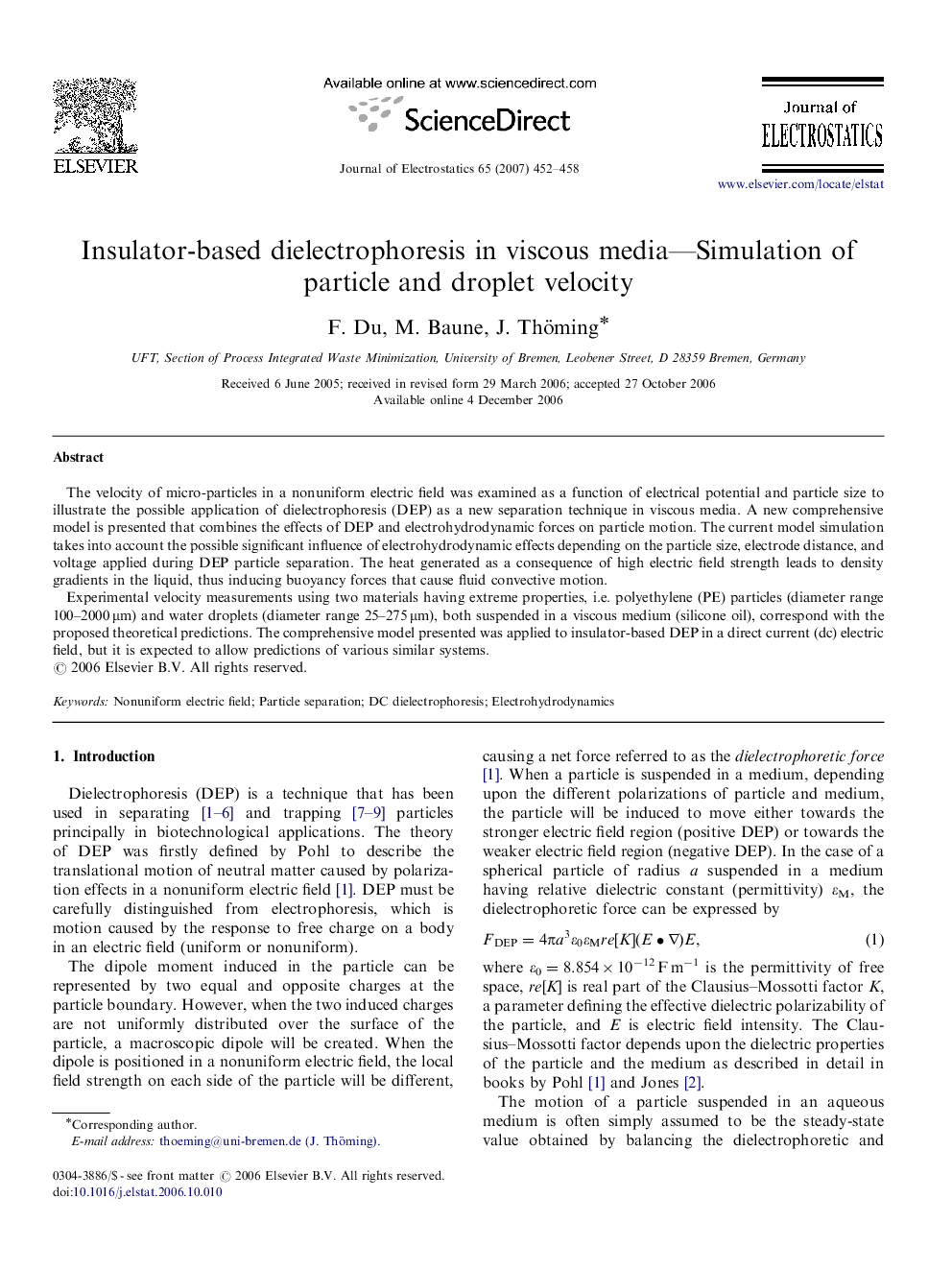| Article ID | Journal | Published Year | Pages | File Type |
|---|---|---|---|---|
| 725886 | Journal of Electrostatics | 2007 | 7 Pages |
The velocity of micro-particles in a nonuniform electric field was examined as a function of electrical potential and particle size to illustrate the possible application of dielectrophoresis (DEP) as a new separation technique in viscous media. A new comprehensive model is presented that combines the effects of DEP and electrohydrodynamic forces on particle motion. The current model simulation takes into account the possible significant influence of electrohydrodynamic effects depending on the particle size, electrode distance, and voltage applied during DEP particle separation. The heat generated as a consequence of high electric field strength leads to density gradients in the liquid, thus inducing buoyancy forces that cause fluid convective motion.Experimental velocity measurements using two materials having extreme properties, i.e. polyethylene (PE) particles (diameter range 100–2000 μm) and water droplets (diameter range 25–275 μm), both suspended in a viscous medium (silicone oil), correspond with the proposed theoretical predictions. The comprehensive model presented was applied to insulator-based DEP in a direct current (dc) electric field, but it is expected to allow predictions of various similar systems.
